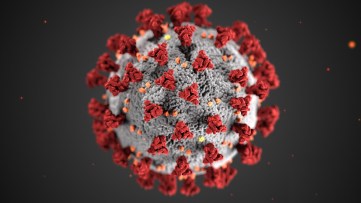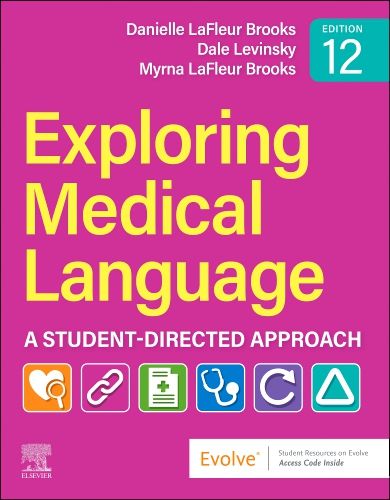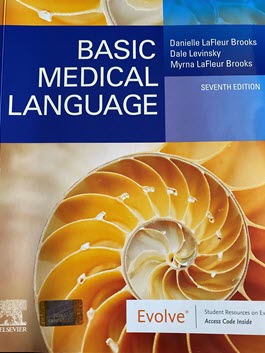We are Witnessing Medical Terminology History in the Making
 It seems just yesterday coronavirus was the medical term used to describe the respiratory illness recently discovered in China, now spreading to the rest of the world.
It seems just yesterday coronavirus was the medical term used to describe the respiratory illness recently discovered in China, now spreading to the rest of the world.
Then suddenly, February 11, 2020 to be exact, a different term COVID-19 was used to describe the disease.
What happened?
On February 11th the World Health Organization (WHO) announced COVID-19 as the name of this new disease.
Up until that date the disease had been referred to as the coronavirus or novel coronavirus. Coronavirus is an umbrella term for a group of seven viruses that cause colds and diseases. ‘Novel’ indicates a new virus. Coronavirus is not the name of the disease, but rather the name of the family of the virus that causes it.
The Naming of the Disease
COVID-19 (COvid-nineTEEN) is the name for an acute infectious disease caused by a new coronavirus virus SARS-CoV-2 that had not been previously identified in humans. The virus causes respiratory illness (like the flu) with symptoms such as a cough, fever and in more severe cases, pneumonia.
The World Health Organization is responsible for naming the disease. They wanted a name that was short, descriptive, and easy to say. Also, in order to avoid stigmatization, they did not want the following in the name:
- Geographical locations (such as Lyme disease)
- People’s names (such as Alzheimer disease)
- The name of an animal or a kind of food (such as Swine flu)
- References to a culture or industry (such as Legionnaire disease)
To meet this criterion, the WHO chose COVID-19, an acronym, that stands for
- CO – corona
- VI – virus
- D – disease
- 19 – 2019, the year the disease first appeared in China
The Naming of the Virus
SARS-CoV-2 is the name of the coronavirus that causes the disease now known as COVID-19.
The International Committee on Taxonomy of Viruses (ICTV) has the task of naming the causative virus. They chose SARS-CoV-2 because the virus is genetically related to the coronavirus responsible for the SARS outbreak of 2002. While related, the two viruses are different.
SARS-CoV-2 stands for severe acute respiratory syndrome coronavirus 2.
Coronavirus

Coronavirus (coROnaVIrus) is a family of single-stranded RNA viruses that have a lipid envelope studded with crown-like spikes. They are zoonotic, meaning they are transmitted between animals and people.
There are seven known coronaviruses that cause illness ranging from the common cold to more severe diseases. Three of the seven have caused the following major outbreaks of deadly pneumonia in the 21st century:
- COVID-19: (disease) SARS-CoV2 (virus) identified as the cause of coronavirus disease that began in Wuhan, China in late 2019 and spread worldwide.
- MERS: (disease) MERS-CoV (virus) was identified in 2012 as the cause of Middle East respiratory syndrome.
- SARS :(disease) SARS-CoV (virus) was identified in 2002 as the cause of an outbreak of severe acute respiratory syndrome that began in China’s Guangdong province.
The term coronavirus was first used in a publication in 1968.
Take Away
Two new terms have been added to the lexicon of medical language – COVID-19 and SARS-CoV2.
COVID-19 is currently heard many times throughout the day and for most of us, it has quickly become part of our everyday language.
SARS-CoV2 is mostly used by the scientific community and it will probably remain hidden from our everyday language.
We have witnessed medical terminology history in the making!
How long COVID-19 will be in common use is unknown. Once SARS was commonly used, now, it is seldom seen or heard. No matter, both new terms will remain forever in the lexicon of medical language.
Contributing Editor: Myrna LaFleur Brooks
References
https://www.who.int/emergencies/diseases/novel-coronavirus-2019/technical-guidance/naming-the-coronavirus-disease-(covid-2019)-and-the-virus-that-causes-it
https://www.cdc.gov/coronavirus/2019-ncov/index.html
https://www.merckmanuals.com/professional/infectious-diseases/respiratory-viruses/coronaviruses-and-acute-respiratory-syndromes-covid-19,-mers,-and-sars
https://www.merriam-webster.com/dictionary/coronavirus
https://www.who.int/health-topics/coronavirus
https://www.bbc.com/news/world-asia-china-51371770
https://www.merckmanuals.com/professional/infectious-diseases/respiratory-viruses/coronaviruses-and-acute-respiratory-syndromes-covid-19,-mers,-and-sars
https://apps.who.int/iris/bitstream/handle/10665/163636/WHO_HSE_FOS_15.1_eng.pdf;jsessionid=41FCD410FEEEEFCC41A9E75F77BA0E02?sequence=1
Like this post? Share with your friends!






